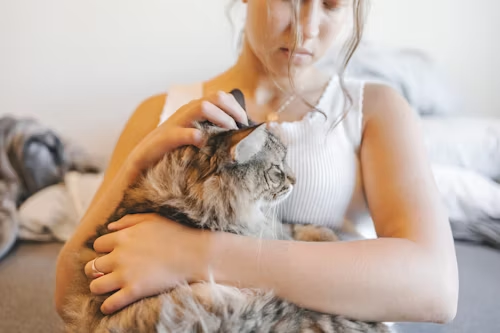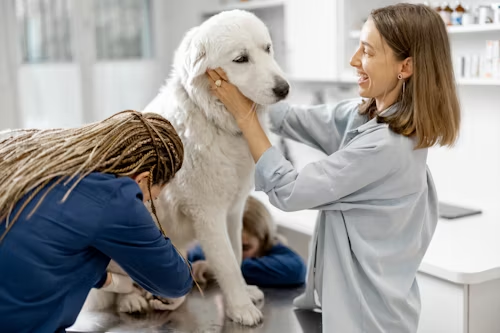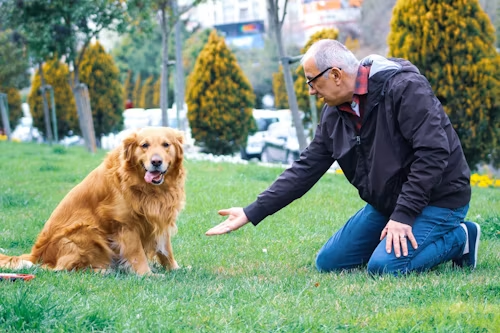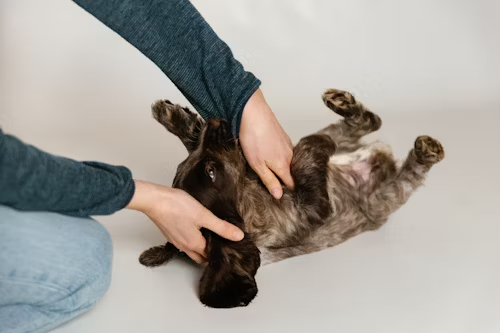Pets are not just companions; they are part of the family. Whether you have a dog, cat, rabbit, or even a hamster, providing them with mental and physical stimulation is crucial to their overall well-being. Animals, like humans, have needs that go beyond food, water, and shelter. They require mental and physical engagement to live healthy, happy lives. This article explores the importance of mental and physical stimulation for pets and offers practical suggestions to help ensure your furry or scaly friends remain engaged, healthy, and content.
What Is Mental and Physical Stimulation for Pets?

Physical stimulation refers to activities that help keep your pet’s body fit and healthy. For dogs, this could mean walks, runs, and fetch games. For cats, it could involve climbing, hunting, or playing with interactive toys. Physical stimulation is essential for maintaining muscle tone, joint health, and preventing obesity. Without adequate exercise, pets can become overweight, lethargic, and at risk for serious health issues such as heart disease and diabetes.
On the other hand, mental stimulation involves activities that engage your pet’s mind and cognitive abilities. This can include training sessions, puzzle toys, and socialization. Mental stimulation keeps pets sharp, reducing the chances of cognitive decline or behavioral issues like anxiety, boredom, and destructive behavior. Pets, like dogs and cats, are intelligent creatures that require challenges and problems to solve, or they may exhibit frustration and undesirable behavior.
The Benefits of Mental and Physical Stimulation
1. Prevents Boredom and Destructive Behavior

Boredom is one of the leading causes of undesirable behavior in pets. Dogs might chew on furniture, cats may scratch furniture or curtains, and small animals may dig or try to escape. These behaviors often arise from a lack of stimulation. Pets who don’t have enough to do are likely to turn to destructive activities to entertain themselves. Providing physical and mental stimulation can alleviate this problem by channeling their energy into more productive and positive activities.
For example, a dog that gets regular walks and playtime is less likely to chew on shoes or bark excessively. Cats that have stimulating toys, scratching posts, and places to climb are less likely to destroy furniture.
2. Encourages Physical Health and Prevents Obesity

Obesity is a growing issue among pets, particularly in dogs and cats that are kept indoors. Without the opportunity to burn off energy, many pets become overweight, which can lead to joint problems, heart disease, and a lower quality of life. Physical exercise is essential to combat obesity and keep pets in optimal health.
For dogs, regular walks, runs, and playtime in the yard are excellent ways to maintain a healthy weight and improve cardiovascular health. Cats can benefit from interactive toys, laser pointers, or playtime with their owners to ensure they stay active.
Physical activity also helps keep a pet’s muscles strong, improves circulation, and maintains joint flexibility. For older pets, this can help with arthritis and mobility issues.
3. Enhances Mental Health and Reduces Stress

Just like people, pets experience mental stress and anxiety. A lack of stimulation can contribute to feelings of isolation and frustration, leading to mental health issues such as depression or anxiety. Providing mental stimulation is key to preventing these problems and ensuring that your pet stays emotionally balanced.
For instance, puzzle toys that challenge pets to work for their food or treats engage their minds and provide a sense of accomplishment. This kind of activity releases endorphins, the “feel-good” hormones, which help relieve stress and anxiety. Additionally, socialization—whether through interaction with other animals or people—can help prevent loneliness, which can also contribute to anxiety.
4. Strengthens the Bond Between Pet and Owner

Engaging in physical and mental stimulation activities with your pet can strengthen the bond between you and your animal. Whether you’re playing a game of fetch with your dog, training your cat to do tricks, or simply spending quality time together, these moments of interaction build trust and deepen the relationship.
Pets thrive on attention and affection from their owners. When you invest time in playing with them, training them, or simply being present, they feel more secure, loved, and valued. The bond formed through shared activities can help create a stronger and more positive relationship with your pet.
5. Promotes Cognitive Health in Older Pets

As pets age, they may experience cognitive decline similar to what humans experience with conditions like dementia or Alzheimer’s. Providing regular mental stimulation can help delay the onset of cognitive dysfunction and keep your senior pet mentally sharp for longer.
For example, teaching an older dog a new trick, using food-dispensing toys, or creating problem-solving activities can help stimulate the brain and keep it engaged. The mental challenges keep your pet’s mind active, promoting healthy cognitive function and preventing boredom-induced anxiety.
How to Provide Mental and Physical Stimulation for Your Pet

Now that we understand why mental and physical stimulation is so crucial for our pets, let’s explore some practical ideas for ensuring your pet’s needs are met.
For Dogs:
- Daily Walks and Runs: Dogs need regular exercise to stay fit and healthy. Aim for at least 30 minutes to an hour of physical activity per day. Active breeds, like Border Collies or Labrador Retrievers, may need more.
- Interactive Toys: Toys that challenge your dog’s brain, such as treat-dispensing puzzles or snuffle mats, provide mental stimulation and encourage problem-solving.
- Training Sessions: Obedience training and trick training can be a fun way to engage your dog’s mind while also improving behavior.
- Socialization: Expose your dog to new environments, other dogs, and people to help keep them mentally sharp and emotionally balanced.
For Cats:
- Interactive Play: Use toys like feather wands, laser pointers, or treat puzzles to engage your cat’s natural hunting instincts.
- Climbing Structures: Cats love to climb and explore vertical spaces. Providing scratching posts, shelves, and cat trees can stimulate both their bodies and minds.
- Hide and Seek: Hide treats or toys around your home and encourage your cat to search for them. This taps into their problem-solving skills and hunting instincts.
For Small Animals (Rabbits, Guinea Pigs, Hamsters):
- Exercise Wheels: Hamsters and guinea pigs benefit from an exercise wheel or ball to stay active and burn off energy.
- Tunnels and Hiding Spaces: Small animals love tunnels and places to hide. Creating an environment with plenty of enrichment items will help stimulate them both physically and mentally.
- Foraging Activities: Hide your pet’s food in different areas of their enclosure to encourage them to search and problem-solve.
Conclusion
Pets, regardless of their species or size, thrive on mental and physical stimulation. Providing these opportunities not only improves their health and well-being but also strengthens the bond you share with them. By ensuring that your pet stays active, mentally challenged, and emotionally fulfilled, you can help them lead a happier, healthier life. So, take the time to engage with your pet every day, and watch them flourish as a result!
 petharmonyblog.com
petharmonyblog.com
